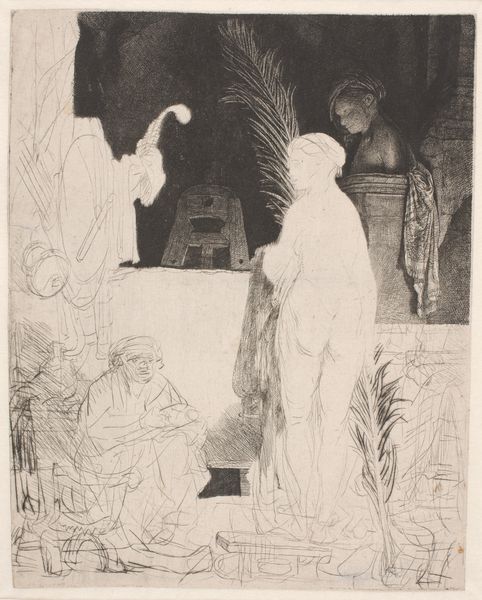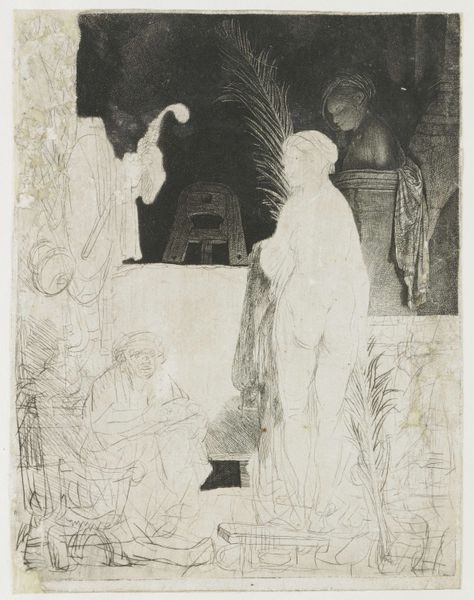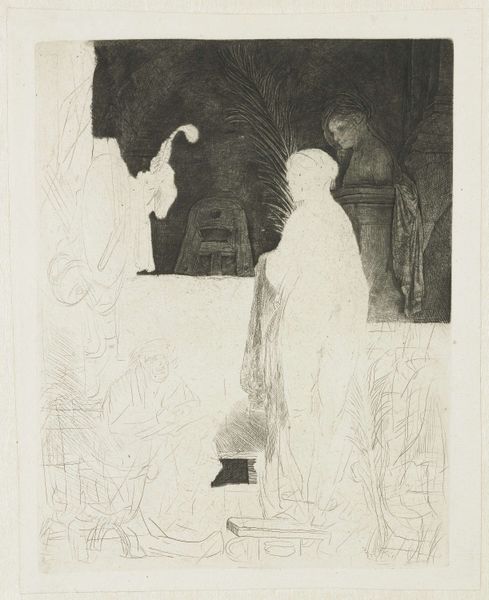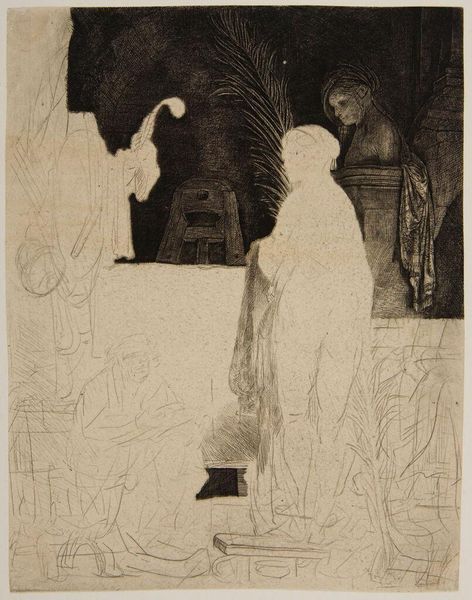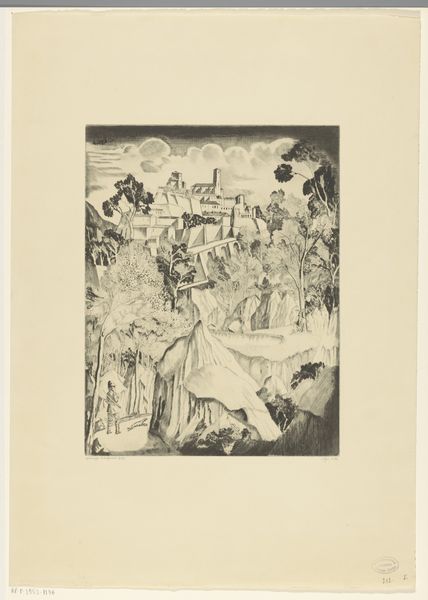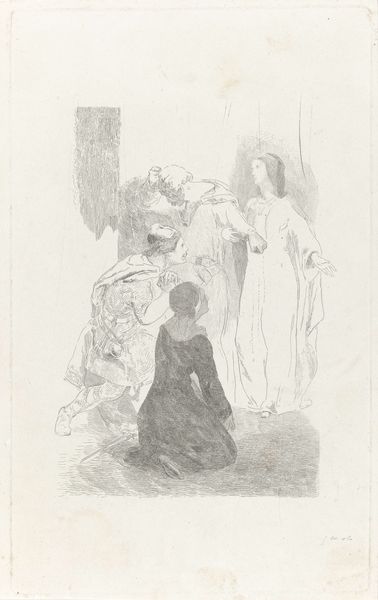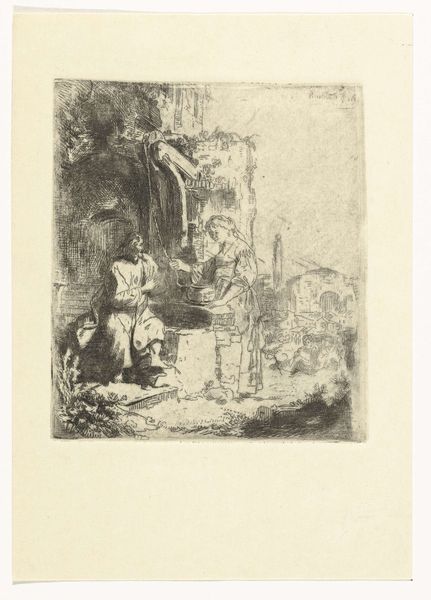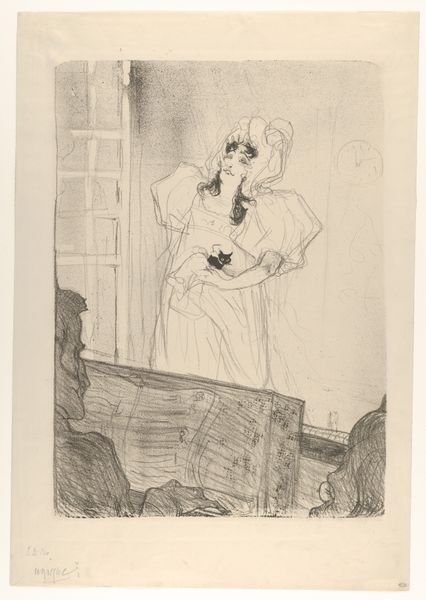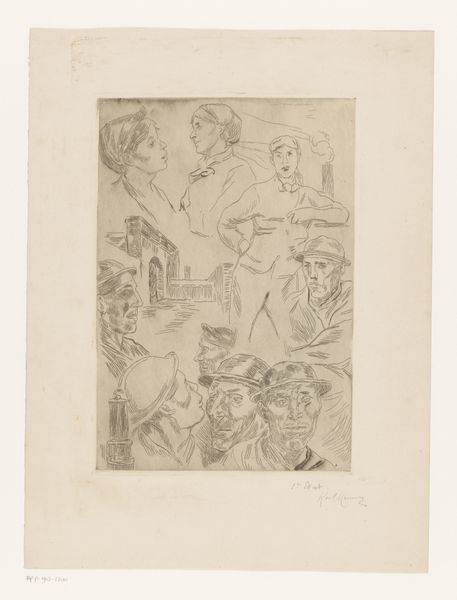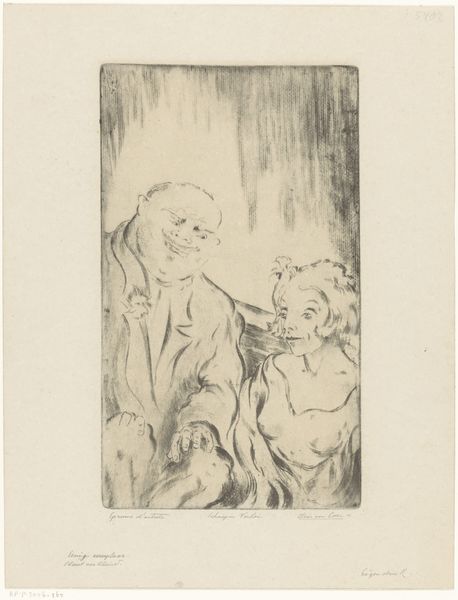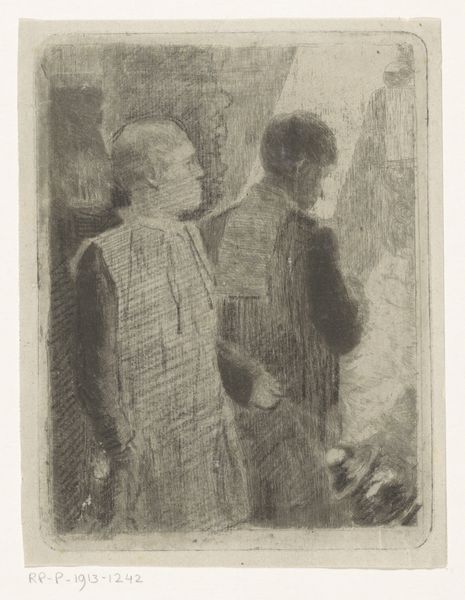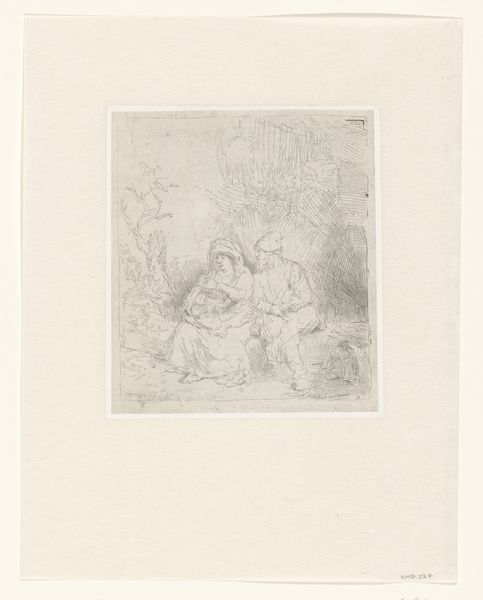
Dimensions: height 231 mm, width 184 mm
Copyright: Rijks Museum: Open Domain
Curator: Here we have Rembrandt van Rijn’s etching "The artist drawing from the model," created around 1639 and then reworked around 1906. It is held here at the Rijksmuseum. Editor: My first thought is how unfinished it seems. Almost dreamlike, as if snatched from a fleeting moment. There’s an air of voyeurism about it, wouldn’t you say? Curator: That sensation is very much a product of Rembrandt's approach. Etching allowed him a freedom of line rarely seen at the time. Observe how the negative space is just as important as the forms themselves. It allows our eye to fill in details, creating a more dynamic interaction. This also provides the piece with a more modern aesthetic feel even though the origin dates to the Baroque era. Editor: Exactly! That sketchy quality is compelling, even unsettling. The artist observing the nude model, creating an almost uncomfortable power dynamic in the studio… How conscious was Rembrandt of those implications, do you think? Curator: Certainly the artist's position as a creator is reinforced and the model's becomes an object of contemplation for both the artist in the work as well as those of us now observing. It reinforces the politics of display from that time, where nudes, though pervasive, were not available for all to see and create. This speaks to both a culture of luxury and of assumed power for male artist who have dominated artistic creation. Editor: Yes, absolutely. I can’t help but consider the gendered aspects, given contemporary debates around the male gaze and female representation within art. There’s a rich discourse to be had regarding artistic creation and power dynamics within these scenarios. Curator: Undoubtedly. Further, consider the accessibility that printing allowed for in this particular time. While it still could only be widely distributed and appreciated within certain socioeconomic classes it was yet another democratizing element that is not often found among other traditional modes of painting or artistic production. Editor: I'm so glad you pointed out how prints added to the broader landscape and democratizing element in art making. It underscores that, while the piece can conjure problematic observations for today's viewer, we should always attempt to contextualize within its respective sociopolitical frame. Thank you! Curator: My pleasure. It’s a testament to Rembrandt’s skill that we can still find such complexity and ongoing relevance in a work from so long ago.
Comments
No comments
Be the first to comment and join the conversation on the ultimate creative platform.
